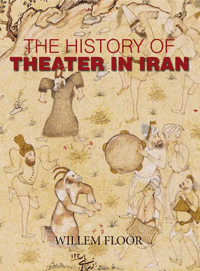
What happened
... in the Iranian presidential election
June 30, 2005
iranian.com
Iran is one of the few countries in the world that has had
three revolutions in the past 100 years. It was in 1905 when a
Constitutional Revolution took place in Iran. In 1979, under the aegis
of the Islamic Revolution, another social revolution took place in
Iran. The presidential elections of 2005 may be considered as a third
revolution via the ballot box. How can we understand this
extraordinary phenomenon?
What is happening in Iran can be better seen in comparative perspective.
Since 1776, word history has been witnessing a continuing democratic
revolution. However, democracy itself has assumed different faces:
liberal, social, and communitarian. The Puritan Revolution in Britain
in 1688 and the 18th century social revolutions in the United States
and France inaugurated liberal democratic revolutions in the world.
In 1848, they were followed by liberal democratic revolutions in
Germany and Italy. At the turn of the 20th century, Russia, China,
Iran, and Egypt also experienced what can be identified as liberal
democratic revolutions.
The Great World Depression of 1930s inaugurated another phase
in democratic development, which may be called social rather than
liberal. The failure of world capitalism to tame itself led to
a failure of effective demand until World War II broke through
economic stagnation. During this critical decade, the United States
and some of the Western European countries adopted social measures
that corrected the inherent capitalist tendency to exacerbate inequalities.
Measures such as social security, unemployment compensation, and
government regulations were instituted under the New Deal in the
United States.
The Islamic Revolution in Iran combined elements of the liberal,
social, and communitarian democratic revolutions. Its Islamic ideological
cover may have camouflaged its content. But a close reading of
the Islamic Constitution and political practice in Iran in 1979-2005
can demonstrates a complex mix of liberal electioneering, social
democratic regulations on behalf of the lowest strata, and a communitarian
zeal for the Shia Islamic identity.
 During the past 25 years of revolution, a capitalist revolution
has taken place in Iran. The Islamic revolution removed the last
vestiges of military-feudal fetters and unleashed the merchant-clerical
class. Hashemi-Rafsanjani was the most notable political leader
of the capitalist revolution. He also symbolized the great gaps
that capitalism has generated in a society that champions an egalitarian
Islamic ideology. During the past 25 years of revolution, a capitalist revolution
has taken place in Iran. The Islamic revolution removed the last
vestiges of military-feudal fetters and unleashed the merchant-clerical
class. Hashemi-Rafsanjani was the most notable political leader
of the capitalist revolution. He also symbolized the great gaps
that capitalism has generated in a society that champions an egalitarian
Islamic ideology.
The elections of 2005 in Iran pitted three types of political
leaders against each other. At the risk of over-simplification,
we may identify the political landscape in Iran as follows. Hashemi
represented a continuing capitalist, clerical-merchant revolution.
Khatami and his followers (notably Moin) represented the middle
class liberal democracy. Mahmoud Ahmadinejad came to represent
the lowest strata of society in the rural areas and urban slums.
He also came out of the Revolutionary Guard and Basij ranks, important
channels for upward social mobility. Notably, he was the son of
a blacksmith who had climbed the social ladder through the military.
He symbolized the legendary Kaveh, the son of a blacksmith in Iranian
history who had led a successful revolt against the tyranny of
Zahhak. He had proved his managerial capabilities as the Mayor
of Tehran, a mega-city of about 12 millions. Populism was his ideology.
In his championship of Iranian independence, his nationalism was
beyond reproach.
Will Ahmadinejad’s presidency lead to a totalitarian regime
similar to what happened in Germany under Hitler, Italy under Mussolini,
Japan under Emperor Hirohito, or Argentina under Peron? Will it
turn into what happened under the Abbasid Caliphate in the 10-13
centuries when the recruited Turkish slave-soldiers took over the
regime? Or will it evolve into a liberal-social-communitarian
democratic regime?
 As in the rest of world, democracy in Iran is an unfinished journey.
It will face many detours, include authoritarian regimes. Relations
with the rest of the world, and particularly with the United States,
matter. If Iran is ostracized, internal politics will largely determine
its course. If it is acknowledged, as China was by the United States
after Nixon’s trip to Beijing, Iran would have to gradually
assume the global standards of human rights and democratic practices. As in the rest of world, democracy in Iran is an unfinished journey.
It will face many detours, include authoritarian regimes. Relations
with the rest of the world, and particularly with the United States,
matter. If Iran is ostracized, internal politics will largely determine
its course. If it is acknowledged, as China was by the United States
after Nixon’s trip to Beijing, Iran would have to gradually
assume the global standards of human rights and democratic practices.
About
Majid Tehranian is Director of the Toda
Institute for Global Peace and Policy Research in Honolulu, Hawaii. He
is the author of Bridging
a Gulf: Peace in West Asia (London, I. B. Tauris, 2003).
|